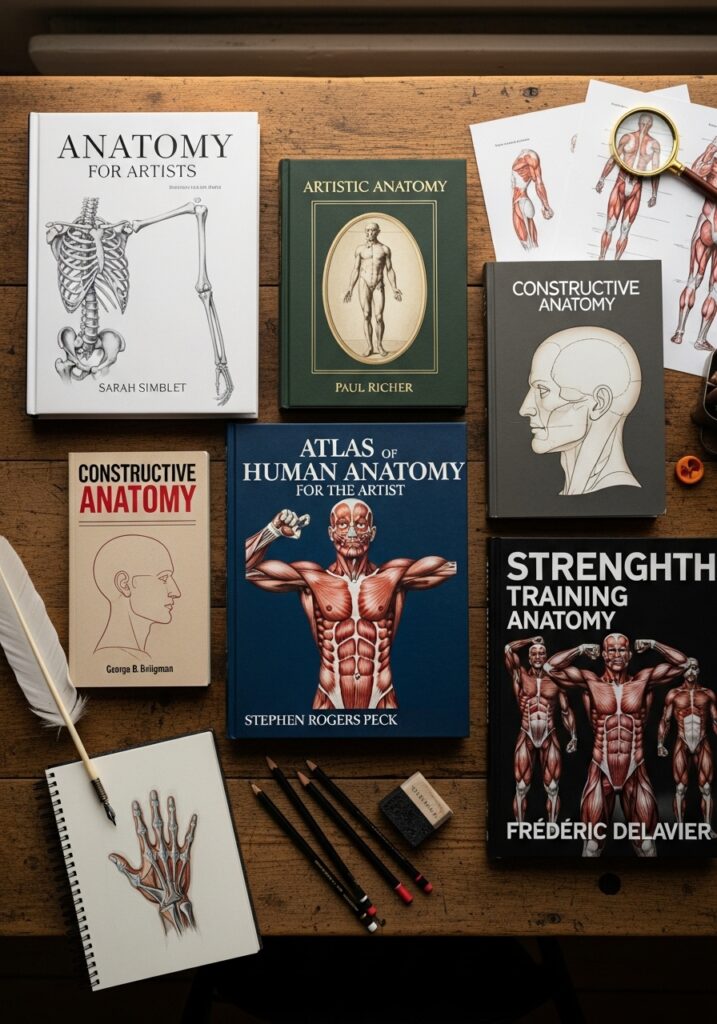

For professional artists, mastering artistic anatomy is not merely an academic exercise; it is the cornerstone of creating believable, dynamic, and expressive human figures. Whether your chosen medium is painting, sculpture, digital art, or even concept design for video games, a profound understanding of the underlying structure and movement of the human body elevates your work from merely good to truly exceptional. It empowers you to draw and sculpt with confidence, to imbue your characters with life, weight, and emotion, and to transcend superficial observation by grasping the logic beneath the skin.
Many artists feel overwhelmed by the sheer complexity of human anatomy. It can seem like a daunting subject, filled with Latin terms and intricate diagrams. However, the journey to mastery is not about memorizing every muscle insertion, but rather understanding the major forms, their relationships, and how they contribute to overall movement and expression. It’s about developing an anatomical “eye” – an ability to perceive the inner workings of the body even when drawing from life or imagination. To aid in this indispensable quest, certain texts have stood the test of time, becoming invaluable companions for generations of artists. These books distill complex anatomical information into an artist-friendly format, offering insights that traditional medical texts often overlook. They don’t just show you what something looks like; they teach you why it looks that way and how it moves. Investing in these foundational resources is an investment in your artistic future, equipping you with the knowledge to tackle any figurative challenge.
1. Human Anatomy for Artists: The Elements of Form by Eliot Goldfinger
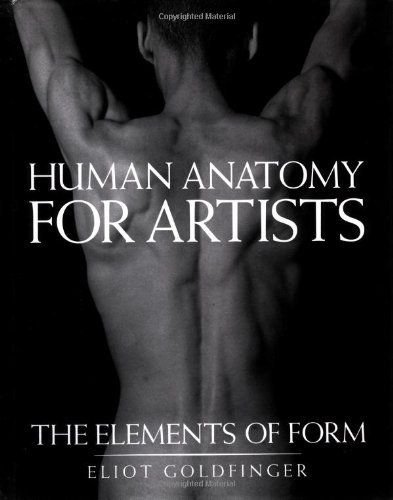
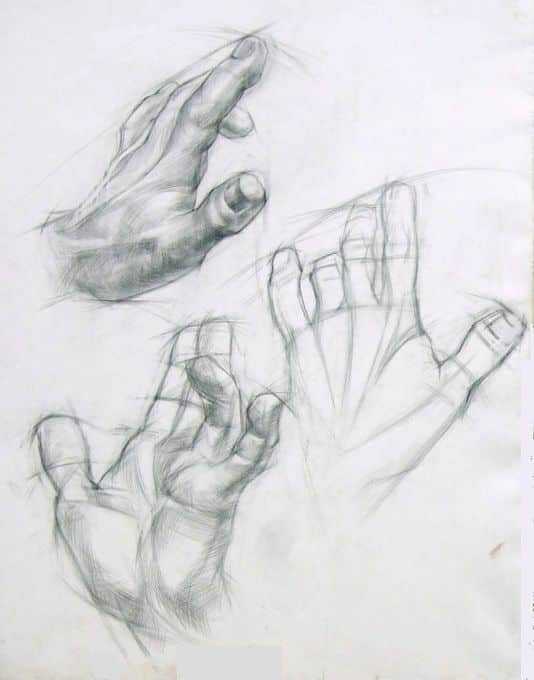
Eliot Goldfinger’s Human Anatomy for Artists stands as a monumental achievement in anatomical study tailored specifically for the visual arts. What sets this book apart is its comprehensive, almost encyclopedic approach, combined with an unparalleled clarity in its illustrations. Goldfinger, a renowned sculptor, approaches anatomy not just as a collection of bones and muscles, but as an intricate system of interconnected forms, meticulously crafted for artistic understanding. His background in sculpture profoundly influences the book’s emphasis on three-dimensional perception, making it an invaluable resource for artists working in any medium, from drawing to digital sculpting.
The book is structured with a meticulous eye for detail, covering every major region of the human body. Each section delves deep into the skeletal framework, the muscular overlays, and how these structures dictate external forms. Goldfinger doesn’t just present diagrams; he provides multiple views, cross-sections, and detailed comparisons, ensuring that the reader grasps the volumetric nature of each anatomical component. For instance, when discussing the skull, he doesn’t just show its frontal view but breaks it down into individual planes, demonstrating how light interacts with its complex surfaces, which is critical for realistic rendering. This sculptural approach helps artists understand the forms rather than merely memorizing their names.
One of the book’s most remarkable features is its extensive use of photographs of écorché models—figures with their skin removed to expose the musculature—and cadaveric dissections. These real-world references, often shown alongside clear, explanatory line drawings, provide an undeniable sense of authenticity and depth that is rare in artistic anatomy texts. Goldfinger’s careful annotation of these images bridges the gap between scientific accuracy and artistic interpretation, guiding the artist’s eye to the most relevant anatomical landmarks and surface indications. He meticulously points out how underlying structures create specific depressions, bulges, and contours on the body’s surface, translating internal complexity into observable form.
Furthermore, Goldfinger includes comparisons between male and female anatomy, variations across different body types, and subtle nuances that differentiate individuals, offering a holistic view of human diversity. This attention to detail is crucial for artists aiming to depict a wide range of characters with anatomical correctness and individuality. The text itself is articulate and precise, providing not just identification but also functional explanations for muscles – their origins, insertions, and actions. This understanding of function is paramount for rendering dynamic poses and conveying a sense of weight and movement. While dense, Human Anatomy for Artists is designed for dedicated study, demanding time and focused effort. It is not a book to be passively read but actively drawn from, tracing forms, understanding connections, and internalizing the complex architecture of the human form. Its academic rigor makes it an indispensable cornerstone for any professional artist’s library, ensuring a deep and lasting comprehension of the subject.
2. Anatomy for the Artist by Sarah Simblet
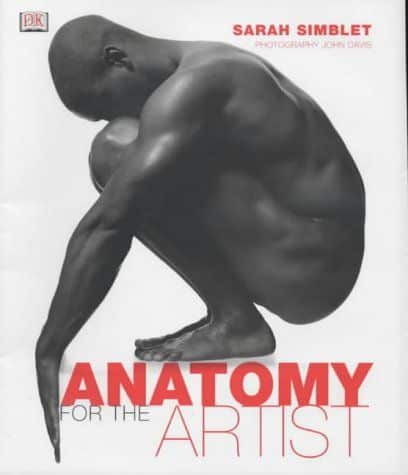
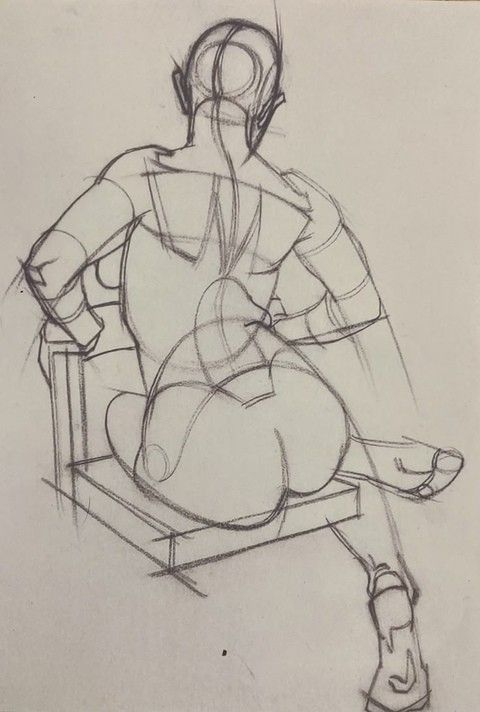
Sarah Simblet’s Anatomy for the Artist offers a uniquely elegant and visually stunning approach to the study of human anatomy. This book distinguishes itself by seamlessly blending high-quality photographic plates with exquisite, detailed drawings, creating a resource that is both scientifically accurate and aesthetically inspiring. Simblet, an artist and anatomist, understands the artistic eye and presents the material in a way that resonates deeply with visual learners. Her work encourages not just observation but also a profound appreciation for the beauty and complexity of the human body.
The core strength of Simblet’s book lies in its integrated methodology. Each chapter systematically explores different regions of the body, starting with the skeletal framework, moving through the muscular system, and culminating in the surface anatomy. What makes this particularly effective is the direct juxtaposition of real-life photographs of models in various poses with corresponding anatomical diagrams. This allows artists to immediately see how internal structures manifest externally, a crucial step in translating anatomical knowledge into artistic representation. For example, a photograph of a model flexing their arm might be accompanied by a transparent overlay showing the biceps and triceps, or a skeletal diagram illustrating the underlying bone structure.
Simblet’s drawings are a highlight, rendered with a sensitivity and precision that are truly exceptional. They are not merely illustrative but artistic works in their own right, inspiring the reader through their clarity and expressive quality. She employs various drawing techniques, from delicate contour lines to richly shaded forms, demonstrating different approaches to depicting anatomical structures. The book also incorporates historical anatomical drawings from masters like Leonardo da Vinci and Andreas Vesalius, contextualizing the study of anatomy within a rich artistic tradition and offering timeless examples of how anatomical knowledge informs great art. This historical perspective reinforces the idea that understanding the body is a continuous journey for artists across centuries.
Beyond bones and muscles, Anatomy for the Artist also touches upon the broader context of artistic expression. Simblet delves into topics like the mechanics of movement, the expression of emotion through facial muscles, and the subtle differences between individual physiques. This holistic approach helps artists move beyond rote memorization to a more intuitive understanding of how anatomy contributes to storytelling and character development. The text itself is accessible and engaging, avoiding overly technical jargon where possible, yet maintaining a high level of academic integrity. Simblet’s passion for both art and anatomy shines through, making the learning process enjoyable and deeply informative. For those who appreciate a more artistic and visually driven approach to anatomy, one that bridges the gap between scientific fact and aesthetic beauty, Simblet’s Anatomy for the Artist is an indispensable guide that will not only educate but also inspire artistic creation.
3. Constructive Anatomy by George B. Bridgman
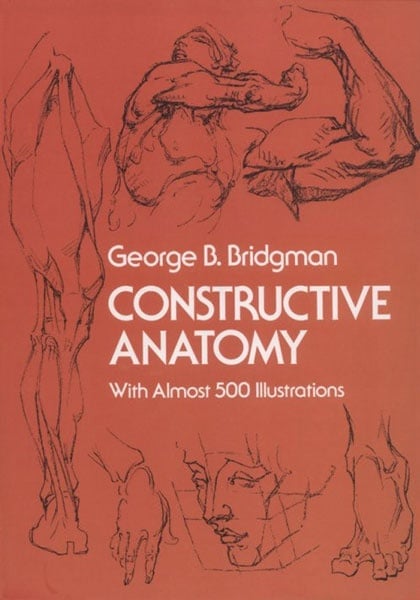

George B. Bridgman’s Constructive Anatomy is a foundational text that has influenced generations of artists, particularly those focused on dynamic figure drawing and capturing the essence of the human form in motion. Bridgman’s approach is radically different from traditional anatomical atlases; he emphasizes mass, rhythm, and the construction of the figure through simplified, overlapping forms rather than meticulous dissection. His philosophy centers on understanding the body as a collection of shifting, interlocking masses, driven by internal forces and capable of immense dynamism.
Bridgman’s method is often summarized by his concept of “drawing through” the form. Instead of outlining the surface, he encourages artists to imagine and draw the underlying volumetric shapes – spheres, cubes, and cylinders – that constitute the body’s major segments. He breaks down complex anatomical structures into simplified, actionable forms, such as the “bean bag” torso or the “block” of the pelvis. This simplification allows artists to quickly establish proportion, gesture, and weight, laying a robust foundation before delving into surface details. The book is replete with thousands of his energetic, expressive drawings, which illustrate these principles with remarkable clarity and vitality.
A key concept in Bridgman’s teaching is the idea of “wedging” and “turning forms.” He demonstrates how muscles and bones are not merely attached but interlock and rotate, creating tension and rhythm. This understanding of how forms connect and influence each other is critical for depicting believable movement and energy. For instance, he shows how the muscles of the shoulder, chest, and back “wedge” into each other, creating a unified and powerful upper torso. This goes beyond static anatomical identification; it’s about understanding the living, breathing, moving structure. His focus on the figure’s central line, often drawn as a dynamic curve, helps artists capture the overall balance and rhythm of a pose, ensuring that the figure feels alive and grounded.
Bridgman’s Constructive Anatomy also excels in its approach to foreshortening. He simplifies complex angles and overlapping forms into manageable planes and masses, making the daunting task of foreshortened limbs and torsos approachable. His drawings demonstrate how to visualize these forms in three dimensions, allowing the artist to construct them convincingly on a two-dimensional surface. The book is not about rendering perfect realism initially, but about building a strong, dynamic underlying structure upon which realism can be developed. It teaches artists to see the figure as a malleable, expressive entity rather than a rigid collection of parts. For artists who struggle with stiff, lifeless figures, or those looking to imbue their drawings with energy and gesture, Bridgman’s methods offer a powerful corrective. It’s a book that demands active engagement, encouraging artists to draw along with his examples, internalizing his constructive principles, and ultimately developing a more intuitive and dynamic approach to the human form. This foundational text is indispensable for developing a keen understanding of form and movement.
4. Dynamic Anatomy by Burne Hogarth

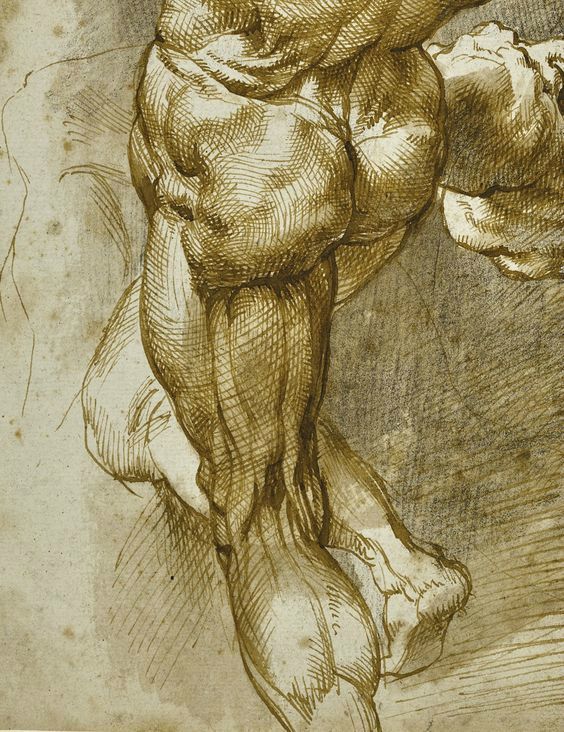
Burne Hogarth’s Dynamic Anatomy is an electrifying departure from traditional anatomical texts, renowned for its highly stylized, muscular, and incredibly dynamic approach to the human form. Hogarth, a master cartoonist and illustrator best known for his work on Tarzan, brought an unparalleled sense of energy and exaggerated realism to his anatomical teachings. This book is not for those seeking photo-realistic renderings of the human body; instead, it is for artists who want to infuse their figures with power, drama, and explosive motion.
Hogarth’s core philosophy revolves around the concept of “dynamic flow” and “super-anatomy.” He emphasizes the expressive potential of muscles and bones, often exaggerating their forms and tension to convey maximum impact. His illustrations are characterized by bold, sweeping lines that define muscle groups as powerful, bulging masses, always suggesting movement and underlying force. He breaks down the body into fundamental shapes and lines of force, teaching artists to think about anatomy in terms of action and reaction, stretch and compression. For example, he presents the ribcage and pelvis not as static structures but as dynamic units that twist and tilt, generating the iconic “contrapposto” and other dramatic poses.
The book is structured to guide the artist through the various anatomical regions, always with an eye towards capturing maximum energy. Hogarth introduces concepts like “tension lines” and “planes of force” that help artists understand how muscles flex, contract, and pull against the skeletal framework to create powerful visual narratives. His depiction of the human torso, for instance, emphasizes the interlocking forms of the chest, back, and abdomen as a complex engine of power, rather than just a collection of individual muscles. This approach is particularly beneficial for artists creating comic books, fantasy art, animation, or any genre where exaggerated dynamism and heroic forms are paramount. Those interested in fantasy art ideas will find Hogarth’s method especially relevant.
Hogarth’s illustrations are a masterclass in drawing with conviction. His figures burst off the page, conveying immense strength and vitality. While scientifically informed, his anatomy is not strictly clinical; it is anatomy seen through the lens of a storyteller, designed to evoke emotion and narrative. He teaches artists to use anatomical knowledge as a tool for expression, rather than an end in itself. For instance, he shows how to emphasize the flex of a bicep to convey power, or the arch of a back to suggest intense strain. He also provides in-depth studies of heads, hands, and feet, breaking down their complex forms into manageable, dynamic components. While some critics argue that his style can be overly specific, making it challenging to adapt for more subtle realism, the lessons in Dynamic Anatomy are invaluable for adding life and movement to any figure. It teaches artists to feel the anatomy, to understand the forces at play, and to translate that understanding into compelling visual forms. For anyone striving to make their figures powerful and emotionally resonant, Hogarth’s volume is an essential, albeit unique, guide.
5. Atlas of Human Anatomy for the Artist by Stephen Rogers Peck


Stephen Rogers Peck’s Atlas of Human Anatomy for the Artist is a revered and highly practical reference book, designed to serve as a comprehensive visual dictionary for artists. Unlike some of the more interpretative anatomy texts, Peck’s atlas focuses on clarity, precision, and an exhaustive presentation of anatomical information, making it an ideal companion for anyone seeking a solid, detailed understanding of the human body. Its enduring popularity stems from its straightforward organization and its wealth of clearly rendered illustrations.
The book is structured like a traditional atlas, systematically dissecting the human form into its fundamental components: the skeletal system, the muscular system, and surface anatomy. Each section is meticulously illustrated with multiple views and cross-sections, providing a thorough visual exploration of bones, joints, and muscles. Peck’s drawings are precise, clean, and highly informative, designed to be easily understood by artists without a medical background. He prioritizes accuracy in form and proportion, allowing artists to quickly locate and understand specific anatomical features. For instance, when depicting a bone, he will show it from various angles, highlighting its significant landmarks and articulations.
A particular strength of Peck’s atlas is its emphasis on surface anatomy – how the underlying structures manifest as visible forms on the body’s exterior. He includes diagrams that overlay muscle groups onto skeletal structures, and then further illustrate how these create the contours, bulges, and depressions observed on the living figure. This visual layering is crucial for artists who need to translate internal knowledge into external realism. He also provides detailed sections on the head and neck, hands, and feet, which are notoriously challenging areas for artists due to their complex bone structures and numerous small muscles. His breakdown of these areas into understandable components is incredibly beneficial. The book offers a comprehensive guide to anatomical drawing of human body, ensuring a strong foundation.
Beyond the purely anatomical illustrations, Peck includes a valuable section on comparative anatomy, briefly touching on differences between male and female figures, and variations in age and body type. He also addresses topics such as movement and proportion, providing practical guides that help artists apply their anatomical knowledge to dynamic poses and accurate figure construction. The text accompanying the illustrations is concise and descriptive, providing essential information without overwhelming the reader with overly technical jargon. It identifies muscles by name, origin, insertion, and action, offering functional context that aids in understanding how the body moves.
Atlas of Human Anatomy for the Artist serves as an indispensable reference tool that artists can consult repeatedly throughout their careers. It’s the kind of book you keep on your drawing table, flipping to relevant pages whenever you encounter a challenging pose or need to verify a specific anatomical detail. While it may not offer the stylistic interpretations found in other texts, its unwavering commitment to clarity, accuracy, and comprehensive coverage makes it an essential resource for developing a solid, practical understanding of human anatomy. Every professional artist serious about the human figure will find this atlas a cornerstone of their personal art library. For a deeper dive into the creative process, understanding different types of art can also broaden your perspective.
How to Effectively Study Artistic Anatomy

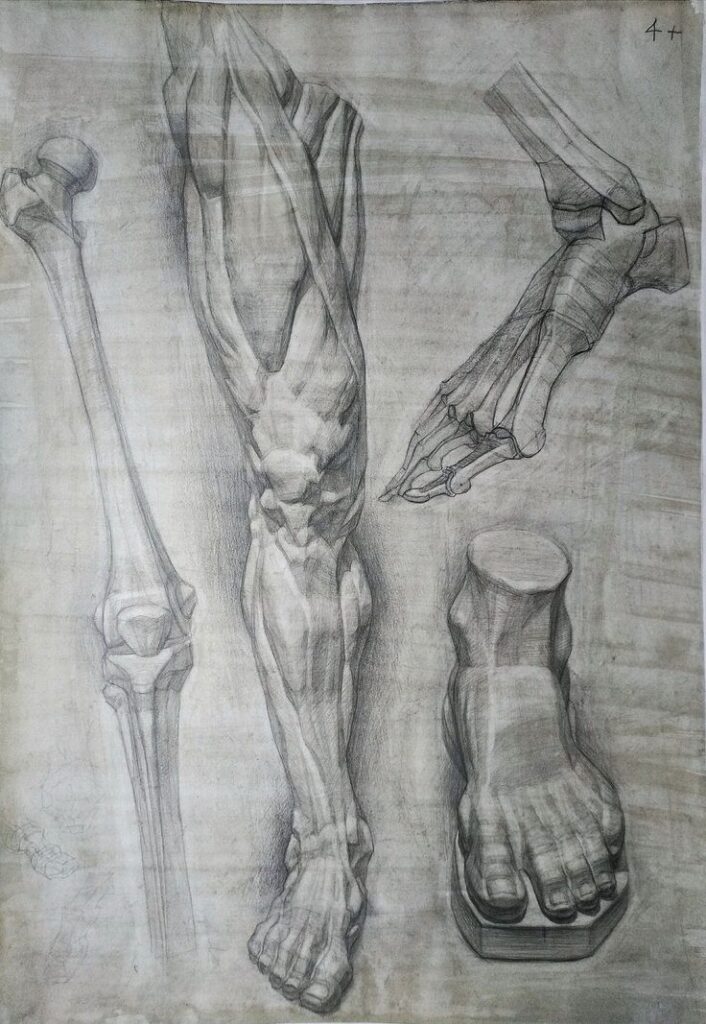
Acquiring these books is merely the first step. True mastery of artistic anatomy comes through dedicated, active study. Here are some strategies to maximize your learning:
- Draw, Don’t Just Read: The most crucial advice is to draw alongside these books. Copy the diagrams, trace over the muscles and bones, and redraw figures from the text in your own style. This kinesthetic learning cements the information in your mind far more effectively than passive reading. Consider drawing the same figure from multiple angles to internalize its three-dimensional form.
- Active Comparison: Constantly compare what you see in the books with real-life references – whether it’s your own hand, a photograph, or a live model. Try to identify the anatomical landmarks and muscle groups that create the surface forms. This practice helps you translate theoretical knowledge into observational skill. For detailed study, even practicing how to draw a realistic eye involves understanding underlying structures.
- Focus on Relationships, Not Just Isolation: Understand how different anatomical structures interact. How does the deltoid connect to the humerus? How does the sternocleidomastoid affect the turn of the head? The body is a unified system, and understanding these connections will make your figures more cohesive and believable.
- Gesture First, Anatomy Second: Always start with the overall gesture and flow of the figure before adding anatomical details. Anatomy should enhance the gesture, not stiffen it. Books like Bridgman and Hogarth are excellent for developing this dynamic approach.
- Build Your Own “Anatomy Atlas”: Create your own simplified anatomical diagrams and sketches in a sketchbook. Personalize the information, drawing what you struggle with, and reinforcing what you understand. This active note-taking and drawing process helps solidify concepts.
- Utilize Digital Tools (But Don’t Rely Solely): While these books are timeless, modern tools like 3D anatomy apps (e.g., Anatomy 360, ZBrush anatomy models) can complement your study, allowing you to rotate and examine forms in a virtual space. However, always pair digital study with traditional drawing to develop hand-eye coordination and observational skills.
- Regular Review and Practice: Anatomy is a complex subject that requires consistent review. Set aside dedicated time each week for anatomical study and practice. Repetition is key to long-term retention. Creating a dedicated space for your art and books, perhaps by learning to step-by-step build your own bookshelf, can also foster a disciplined learning environment.
- Understand Function: Beyond memorizing names, learn the function of key muscles (origin, insertion, action). Knowing what a muscle does helps you predict how it will look in different poses and movements, lending authenticity to your work.
The Value Proposition: Why Invest in Anatomical Mastery?
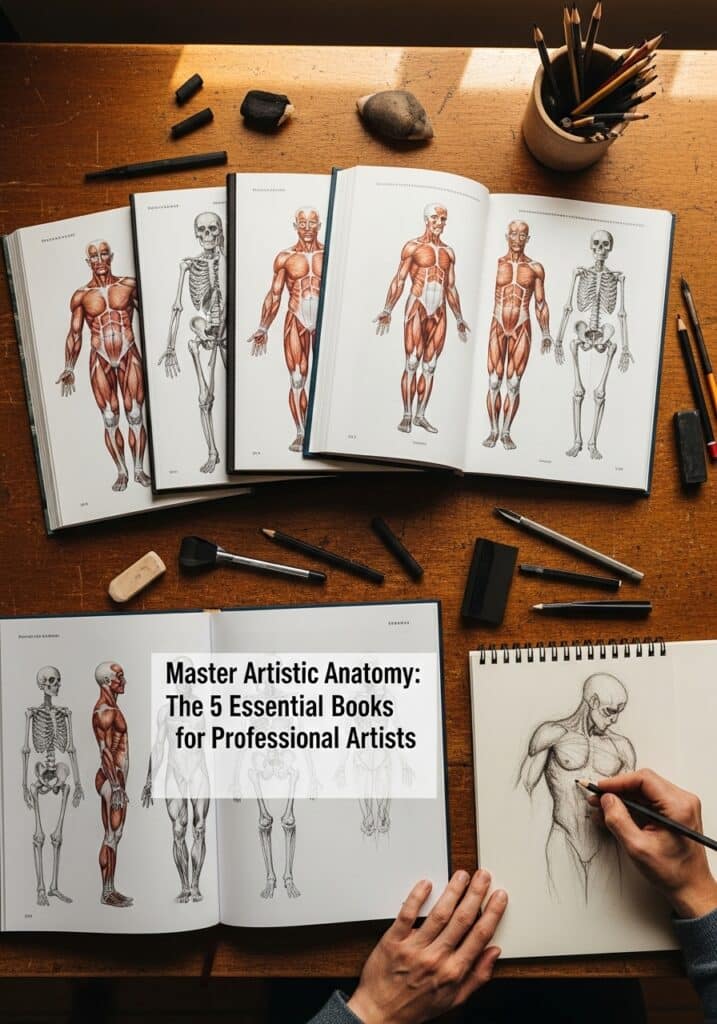

For the professional artist, the pursuit of anatomical mastery offers a profound return on investment. Firstly, it instills confidence. When you understand the underlying structure, you are no longer guessing but drawing with informed intent. This confidence translates into bolder lines, more decisive forms, and less hesitation in your work. Secondly, it elevates realism and believability. Even in stylized or imaginative works, an anatomical foundation makes characters feel grounded, weighty, and physically present. A creature design, for example, becomes more convincing when its skeletal and muscular systems feel plausible, even if fantastical. Thirdly, anatomy is key to dynamic expression and storytelling. Knowing how muscles create facial expressions or how the body articulates emotion through gesture allows you to imbue your characters with deeper psychological impact. You can portray struggle, grace, power, or vulnerability with greater precision.
Ultimately, mastery of artistic anatomy frees you. It frees you from reliance on constant reference, allowing you to draw from imagination with authority. It expands your creative vocabulary, enabling you to invent poses, envision figures in complex compositions, and design characters that feel truly alive. It also shows a commitment to craft, separating the serious professional from the casual dabbler. In a competitive field, this level of foundational knowledge is a distinct advantage, allowing your art to communicate with clarity, power, and profound authenticity. By immersing yourself in these essential texts, you embark on a transformative journey that will define and elevate your artistic practice for years to come, empowering your ability to truly unleash your creativity and bring your visions to life with unparalleled realism and depth.
In conclusion, the path to mastering artistic anatomy is a challenging but incredibly rewarding one. The five books highlighted – Eliot Goldfinger’s Human Anatomy for Artists, Sarah Simblet’s Anatomy for the Artist, George B. Bridgman’s Constructive Anatomy, Burne Hogarth’s Dynamic Anatomy, and Stephen Rogers Peck’s Atlas of Human Anatomy for the Artist – each offer a unique and invaluable perspective on the human form. Together, they form a robust library capable of guiding any professional artist from foundational understanding to sophisticated application. By dedicating yourself to active study, consistent practice, and drawing through these essential resources, you will unlock the secrets of the human body, transforming your ability to create figures that are not only anatomically correct but also powerfully expressive and deeply resonant. Invest in these pillars of artistic education, and watch your figurative art reach new heights of excellence and authenticity. Your artistic journey of mastering the human form begins with these pages.
- 57shares
- Facebook0
- Pinterest57
- Twitter0



